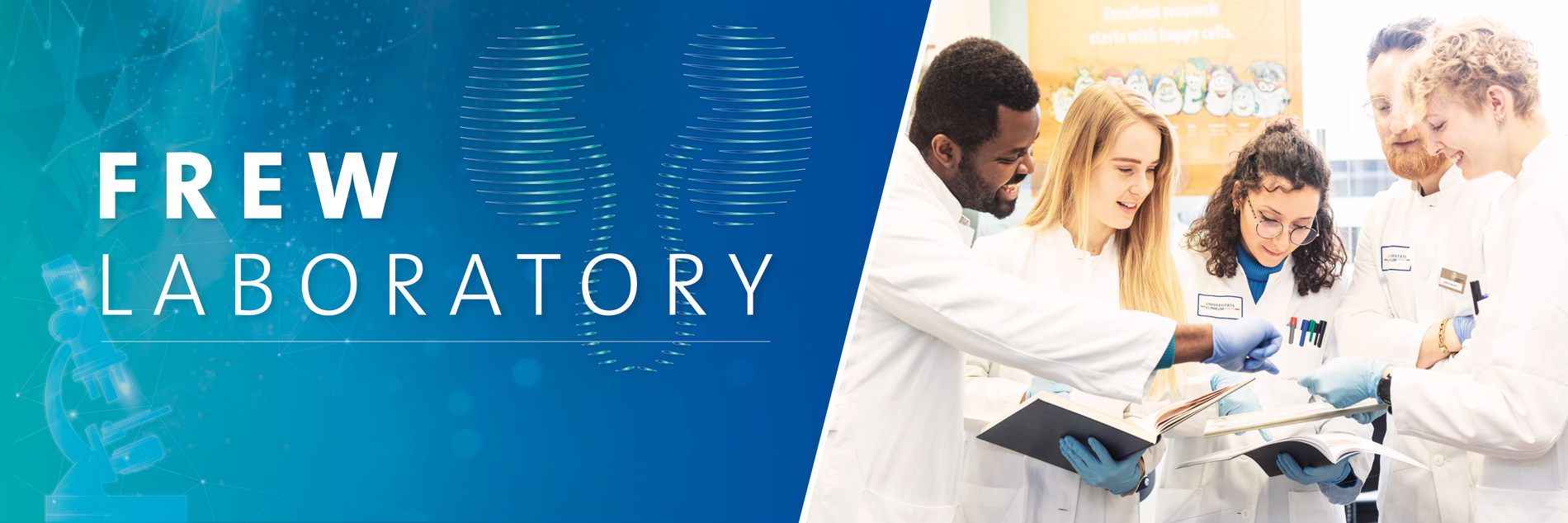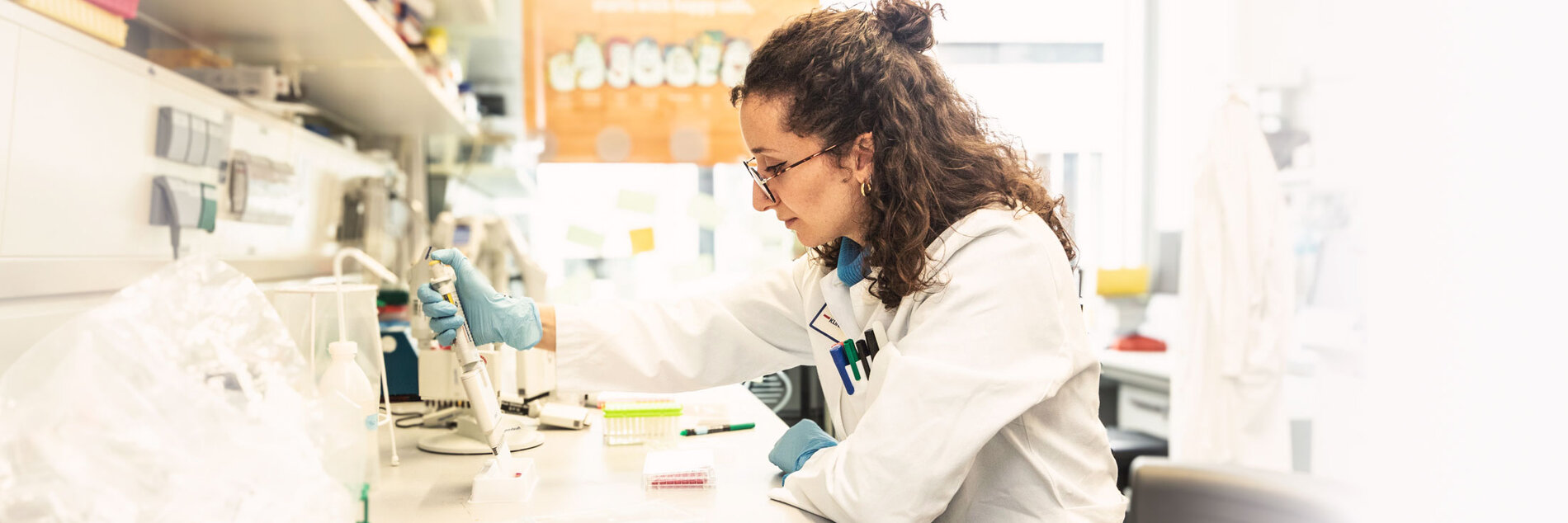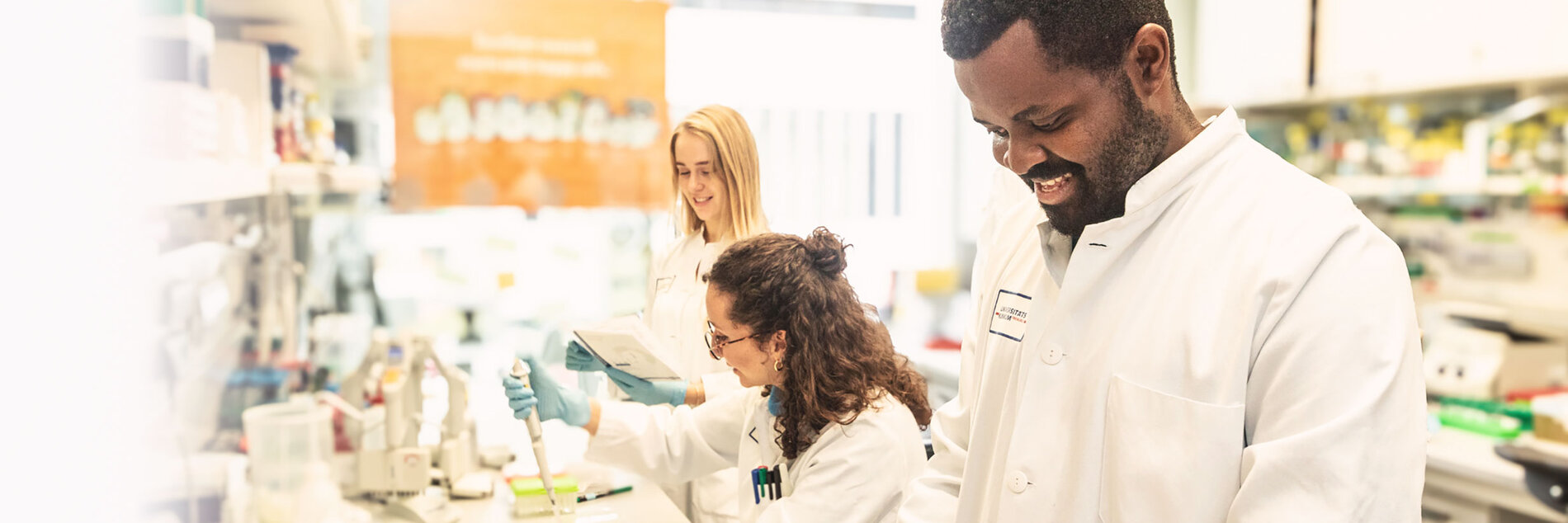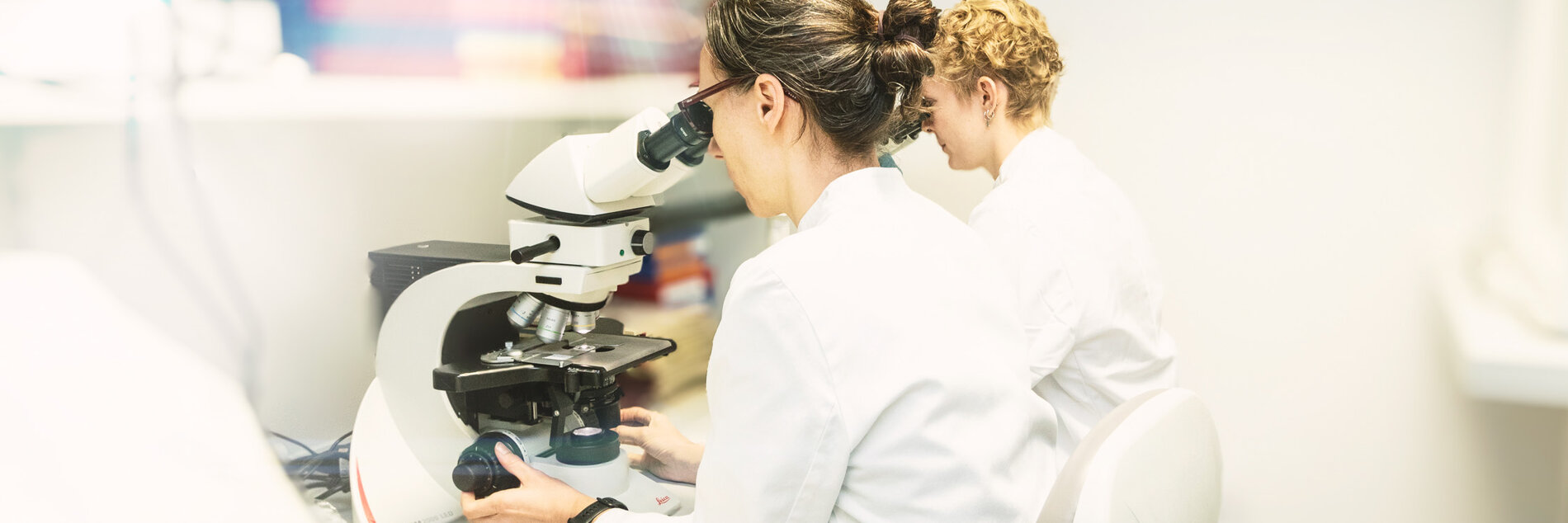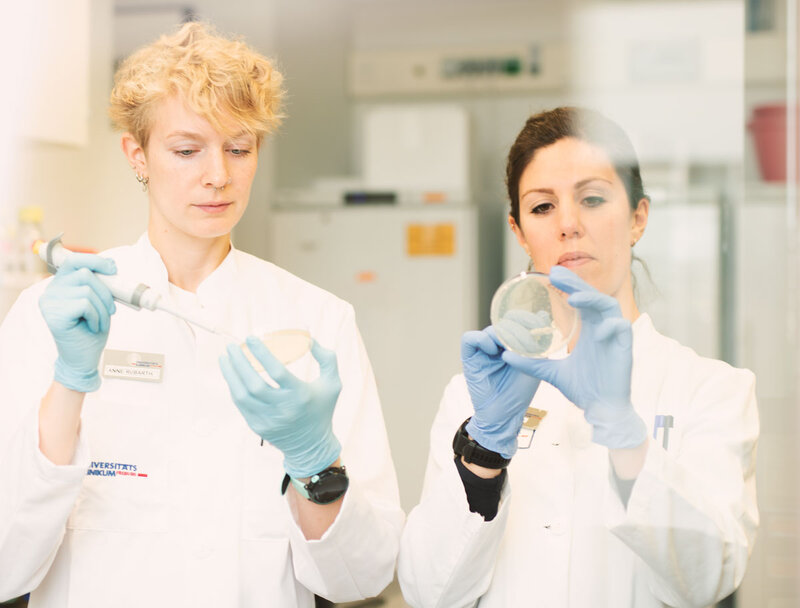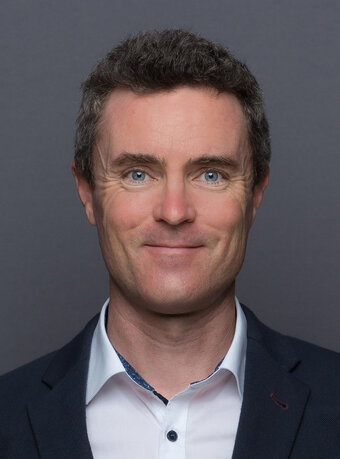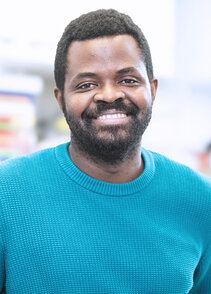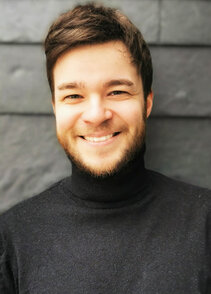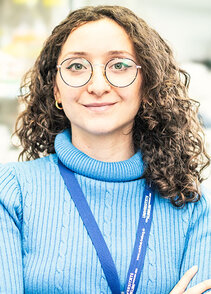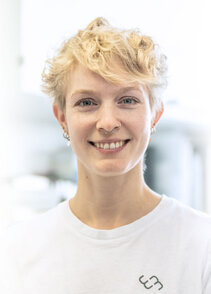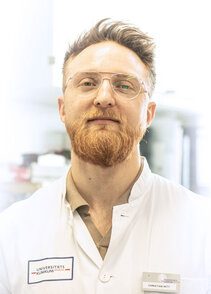Frew Laboratory
Urological CarcinomasScientific focus
Our research group focuses on the study of two common urological malignancies, clear cell renal cell carcinoma and urothelial carcinoma. The application of genomic technologies to the study of cancer continues to revolutionise our understanding of the genetic complexity and heterogeneity of human tumours. A major challenge is to convert this genetic information into biological understanding, as well as to develop individualised therapies that are specific for the mutations that are present in each patient’s tumour.
We study the entire process of tumour formation, beginning with the molecular and cellular mechanisms that underlie the breakdown of normal epithelial proliferative homeostasis, the evolution of tumour cells and parallel evolution of the tumour microenvironment, as well as the process of metastasis. Our major experimental approach is to generate accurate autochthonous mouse tumour models using conventional mouse genetics (Höfflin et al. Nature Communications, 2020; Harlander et al. Nature Medicine 2017; Gonçalves et al Nature Communications 2017, Schönenberger et al. Cancer Research 2016, Guinot et al. Journal of Pathology, 2016, Lehmann et al. JASN, 2015)), as well as novel genetic systems that we have developed (Albers et al. JCI, 2015, Brandt et al. Oncotarget 2018) and continue to develop. We apply advanced analyses such as RNA sequencing, single cell RNA sequencing, exome sequencing, genome-wide epigenetic analyses, metabolomics, in vivo imaging tools and multi-parametric fluorescence microscopy to our tumour models to gain a broad understanding of disease processes. Through collaborations with pathologists we analyse the genetic and cellular composition of human tumours to gain insights into the biology of these diseases as well as to guide our functional genetic and pre-clinical translational studies.
From the therapeutic perspective, we conduct pre-clinical studies to attempt to uncover specific vulnerabilities of cancer cells that are dictated by their underlying mutational genotype and their microenvironment. We identify synthetic lethal gene-drug interactions to discover mutation-specific therapeutic targets and are investigating novel therapeutic interventions that aim to disrupt tumour and immune cell signalling crosstalk with the aim of improving immune checkpoint therapies.
Key words: clear cell renal cell carcinoma, urothelial carcinoma, mouse cancer models, tumour suppressors, epigenetics, signal transduction, immune microenvironment, mutation-specific cancer therapies
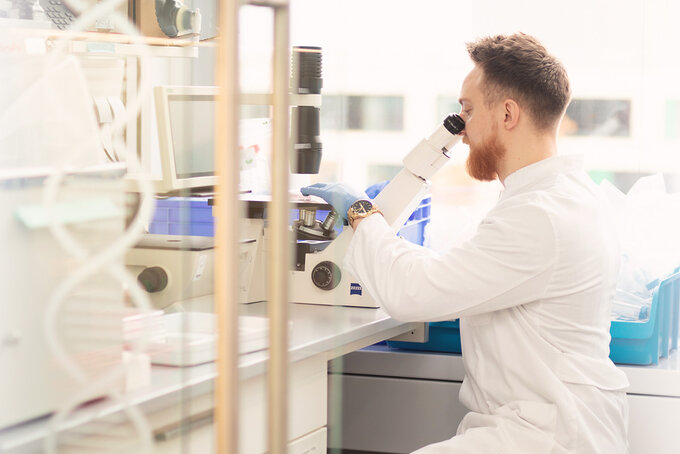


Ian Frew is the Speaker of a new DFG Research Unit (Forschungsgruppe) that will investigate the contributions of mutation and dysregulation of epigenetic regulatory genes to the development and progression of bladder cancer. A total of five researchers at the Uniklinik Freiburg, together with two colleagues at Uniklinik Aachen and Uniklinik Tübingen, have been awarded 4.3 million Euros to establish the UcarE (Urothelial Carcinoma Epigenetics) Forschungsgruppe. UcarE will use mouse bladder cancer models, human bladder cancer tissues, cancer cell lines, bladder cancer organoids, as well as genetic and chemical library screening to identify new therapeutic targets for aggressive urothelial carcinomas.
In a new publication (PMID: 36413415), the Frew Laboratory have identified a potential new approach to treat renal cancers, based on the inhibition of the DNA damage sensing kinase ATR.
Harlander et al. Nature Medicine 2017 was featured in the News and Views section of Nature Medicine, the Research Highlights sections of Nature Reviews Cancer and Nature Reviews Urology and the Research Watch section of Cancer Discovery.
Gonçalves et al. Nature Communications 2017 was featured in the News and Views section of Nature Reviews Nephrology.
TEAM
Head of Frew Laboratory
Principal Investigator
Prof. Dr. Ian Frew
Zentrum Translationale Zellforschung (ZTZ)
Breisacher Str. 115
D- 79106 Freiburg
Postdocs
PhD Students
Technician
Further informations
- DFG Individual Research Grants
- SFB1453 NephGen (https://www.sfb1453.uni-freiburg.de)
- SFB1497 OncoEscape (https://www.sfb1479.uni-freiburg.de)
- FOR5476 UcarE
- Deutsche Krebshilfe
- Department of Defense USA Medical Research Program
- Marc Timmers (Urology and DKTK, Freiburg)
- Melanie Börries (IMBSM and DKTK, Freiburg)
- Christian Gratzke (Urology, Freiburg)
- Robert Zeiser (Hematology/Oncology, Freiburg)
- Tilman Brummer (IMMZ, Freiburg)
- Lena Illert (Hematology/Oncology, Freiburg)
- Cornelius Miething (Hematology/Oncology and DKTK, Freiburg)
- Christoph Schell (Pathology, Freiburg)
- Oliver Schilling (Pathology, Freiburg)
- Susana Minguet (Biology/BIOSS, Freiburg)
- Mathias Heikenwälder (DKFZ Heidelberg)
- Bernhard Schermer (Nephrology, Cologne)
- A. Ari Hakimi (MSKCC, New York)
- Aron Fenton (University of Kansas, Kansas City)
- Marc Brown (Cleveland Clinic, Cleveland)
- Bayram Edemir (Nephrology, Halle)
Müller M, Zodel K, Abhari BA, Cuomo F, Nizamuddin S, Metzger P, Boerries M, Timmers HTM, Frew IJ. KDM5C and KDM5D mutations have different consequences in clear cell renal cell carcinoma cells. Commun Biol. 2025 Feb 15;8(1):244. doi: 10.1038/s42003-025-07695-8. PMID: 39955388
Catalano A, Haas LS, Zodel K, Adlesic M, Cuomo F, Peighambari A, Metzger P, Huang H, Haug S, Köttgen A, Köhler N, Boerries M, Frew IJ. Mutations in tumor suppressor genes Vhl and Rassf1a cause DNA damage, chromosomal instability and induce gene expression changes characteristic of clear cell renal cell carcinoma. Kidney Int. 2024 Dec 24:S0085-2538(24)00912-8. doi: 10.1016/j.kint.2024.12.003. Online ahead of print. PMID: 39725222
Philipp Seidel, Anne Rubarth, Kyra Zodel, Asin Peighambari, Felix Neumann, Yannick Federkiel, Hsin Huang, Rouven Hoefflin, Mojca Adlesic, Christian Witt, David J. Hoffmann, Patrick Metzger, Ralph K. Lindemann, Frank T. Zenke, Christoph Schell, Melanie Boerries, Dominik von Elverfeldt, Wilfried Reichardt, Marie Follo, Joachim Albers, and Ian J. Frew. (2022) ATR represents a therapeutic vulnerability in clear cell renal cell carcinoma. JCI Insight. 2022 Dec 22; 7(24): e156087.
Antonella Catalano, Mojca Adlesic, Thorsten Kaltenbacher, Rhena F U Klar, Joachim Albers, Philipp Seidel, Laura P Brandt, Tomas Hejhal, Philipp Busenhart, Niklas Röhner, Kyra Zodel, Kornelia Fritsch, Peter J Wild, Justus Duyster, Ralph Fritsch, Tilman Brummer, Ian J Frew. (2021) Sensitivity and Resistance of Oncogenic RAS-Driven Tumors to Dual MEK and ERK Inhibition. Cancers 2021, 13(8), 1852.
Hoefflin R*, Harlander S*, Schäfer S, Metzger P, Kuo F, Schönenberger D, Adlesic M, Peighambari A, Seidel P, Chen C, Consenza-Contreras, Jud A, Lahrmann B, Grabe N, Heide D, Uhl F, Chan TA, Duyster J, Zeiser R, Schell C, Heikenwalder M, Schilling O, Hakimi AA, Boeries M and Frew IJ. (2020). Hif-1a and Hif-2a differently regulate tumour development, metabolism and inflammation of ccRCC in mice. Nature Communications, 11: 4111. * equal contribution
Brandt LP, Albers J, Hejhal T, Pfundstein S, Gonçalves AF, Catalano A, Wild PJ and Frew IJ. (2018). Mouse genetic background influences whether HrasG12V expression plus Cdkn2a knockdown causes angiosarcoma or undifferentiated pleomorphic sarcoma. Oncotarget 9: 19753-19766
Harlander S, Schönenberger D, Toussaint NC, Prummer M, Catalano A, Brandt L, Moch H, Wild PJ and Frew IJ. (2017). Combined mutation in Vhl, Trp53 and Rb1 causes clear cell renal cell carcinoma in mice. Nature Medicine. 23: 869-77
Gonçalves AF, Adlesic M, Brandt S, Hejhal T, Harlander S, Sommer L, Shakhova O, Wild PJ and Frew IJ. (2017) Evidence of renal angiomyolipoma neoplastic stem cells arising from renal epithelial cells. Nature Communications. 8: 1466.
Brandt LP, Albers J, Hejhal T, Catalano A, Wild PJ and Frew IJ (2017). Oncogenic HrasG12V expression plus knockdown of Cdkn2a using ecotropic lentiviral vectors induces high-grade endometrial stromal sarcoma. PLoS One. 12(10): e0186102.
Schönenberger D, Rajski M, Harlander S, Frew IJ. (2016). Vhl deletion in renal epithelia causes HIF-1a-dependent, HIF-2a-independent angiogenesis and constitutive diuresis. Oncotarget. 7: 60971-60985
Adlesic M, Frei C, Frew IJ. (2016). Cdk4 functions in multiple cell types to control Drosophila intestinal stem cell proliferation and differentiation. Biology Open. 15: 237-51
Guinot A, Lehmann H, Wild PJ and Frew IJ. (2016). Combined deletion of Vhl, Trp53 and Kif3a causes cystic and neoplastic renal lesions. Journal of Pathology. 239: 365-73
Schönenberger D, Harlander S, Rajski M, Jacobs RA, Lundby AK, Adlesic M, Hejhal T, Wild PJ, Lundby C and Frew IJ. (2016). Formation of renal cysts and tumours in Vhl/Trp53 deficient mice requires HIF1a and HIF2a. Cancer Research. 76: 2025-2036
Albers J, Danzer C, Rechsteiner M, Lehmann H, Brandt L, Hejhal T, Catalano A, Busenhart P, Gonçalves AF, Brandt S, Bode PK, Bode-Lesniewska B, Wild PJ and Frew IJ. (2015). A versatile modular vector system for rapid combinatorial mammalian genetics. Journal of Clinical Investigation. 125: 1603-19
Lehmann H, Vicari D, Wild PJ and Frew IJ. (2015) Combined Vhl and Kif3a deletion accelerates renal cyst formation. Journal of the American Society of Nephrology. 26: 2778-88
Albers J, Rajski M, Schönenberger D, Harlander S, Schraml S, von Teichman A, Georgiev S, Wild PJ, Moch H, Krek W and Frew IJ. (2013). Combined mutation of Vhl and Trp53 causes renal cysts and tumours in mice. EMBO Molecular Medicine. 5: 949-64
Wild PJ, Ikenberg K, Fuchs TJ, Rechsteiner M, Georgiev S, Fankhauser N, Noske A, Roessle M, Caduff R, Dellas A, Fink D, Moch H, Krek W and Frew IJ. (2012). p53 suppresses type II endometrial carcinomas in mice and governs endometrial tumour aggressiveness in humans. EMBO Molecular Medicine. 4:808-24.
Frew IJ, Smole Z, Thoma CR and Krek W. (2013). Genetic deletion of the long isoform of the VHL tumour suppressor gene product alters microtubule dynamics. European Journal of Cancer. 49: 2433-40
Frew IJ, Thoma CR, Georgiev S, Minola A, Hitz M, Montani M, Moch H and Krek W, (2008). pVHL and PTEN tumour suppressor proteins cooperatively suppress kidney cyst formation. EMBO Journal. 27: 1747-57
Frew IJ, Minola A, Georgiev S, Hitz M, Moch H, Richard S, Vortmeyer AO and Krek W, (2008). Combined Vhlh and Pten mutation causes genital tract cystadenoma and squamous metaplasia. Molecular and Cellular Biology. 28: 4536-48
Thoma CR*, Frew IJ*, Hoerner CR, Montani M, Moch H and Krek W, (2007). pVHL and GSK3b are components of a primary cilium-maintenance signalling network. Nature Cell Biology. 9: 588-95. * equal contribution
Frew IJ*, Sims NA*, Quinn JM, Walkley CR, Purton LE, Bowtell DDL and MT Gillespie. (2004). Osteopenia in Siah1a mutant mice. Journal of Biological Chemistry. 279: 29583-8. * equal contribution
Frew IJ, Hammond VE, Dickins RA, Quinn JM, Walkley CR, Sims NA, Schnall R, Della NG, Holloway AJ, Digby MR, Janes PW, Tarlinton DM, Purton LE, Gillespie MT and DDL Bowtell. (2003). Generation and analysis of Siah2 mutant mice. Molecular and Cellular Biology. 23: 9150-61
Frew IJ, Dickins RA, Cuddihy AR, Del Rosario M, Reinhard C, O’Connell MJ and DDL Bowtell. (2002). Normal p53 function in primary cells deficient for Siah genes. Molecular and Cellular Biology. 22: 8155-64
|
2010-2016 |
ERC Starting Grant |
|
2010-2017 |
Assistant Professorship, Zurich Centre for Integrative Human Physiology |
|
2010-2016 |
Swiss National Science Foundation Assistant Professorship |
|
2003-2006 |
Serono Foundation for the Advancement of Medical Science Postdoctoral Fellowship in Cancer Biology |
|
2003 |
Peter MacCallum Cancer Centre Postgraduate Research Medal |

